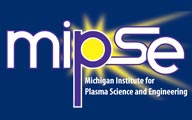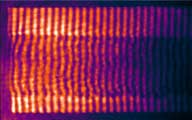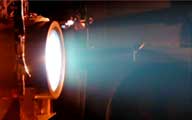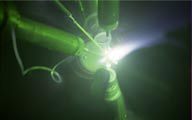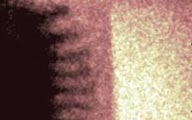Research
MIPSE faculty, staff, and students are engaged in a wide variety of research investigating the fundamentals and applications of plasmas on topics ranging from space plasmas to micro-plasmas. We invite you to contact MIPSE members if you want additional information on their research.
Microwave Plasma for Water Purification Resonates in Southern Europe
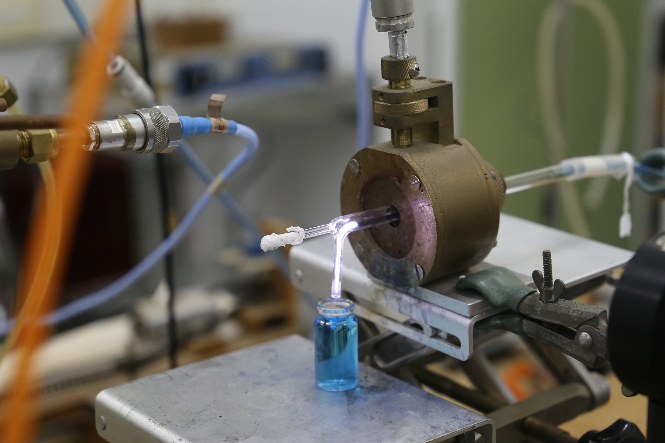
Prof. María C. Garcia, of the Universidad de Córdoba (Spain) and international MIPSE member, and her colleagues Prof. Francisco J. Romero-Salguero and Dr. Juan Amaro-Gahete, have received wide European coverage on their recent advancement on microwave plasma water treatment. They recently reported in Chemosphere on a modified design of a surfatron-based reactor to improve microwave-plasma-assisted generation of reactive oxygen and nitrogen species (RONS) and degradation of organic compounds in water, a topic that resonates in Southern Europe. Water scarcity issues, both due to the drought affecting several regions of Spain and the contamination of wells and water reservoirs because of agricultural activity, urgently require new methods for water purification.
A modified design of a surfatron-based reactor was utilized to sustain a microwave (2.45 GHz) argon plasmas jet. The inclusion of a thin silicon piece inside the dielectric tube in which the discharge is formed altered the electric field configuration, leading to a plasma with higher gas temperature and electron density. This modification prevented plasma filamentation and facilitated the introduction of moderate amounts of water into the discharge that aids in RONS formation. Compared to the conventional surfatron setup, the new design significantly improved peroxide and nitrate production in deionized water and enhanced the degradation of methylene blue in aqueous solutions. The study highlights the relevance of ·OH species from sample evaporation.
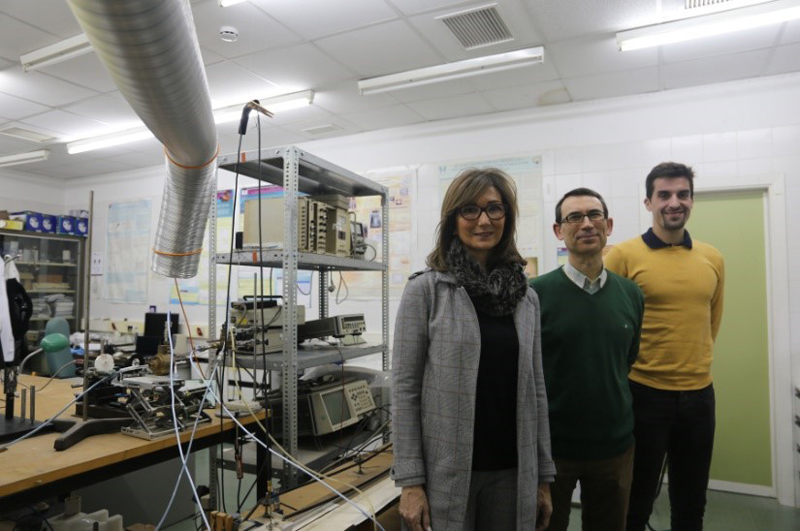
Citation: Juan Amaro-Gahete, Francisco J. Romero-Salguero, María C. Garcia, “Modified surfatron device to improve microwave-plasma-assisted generation of RONS and methylene blue degradation in water” Chemosphere 349, 140820 (2024). https://doi.org/10.1016/j.chemosphere.2023.140820
Links to popular press reports (in Spanish):
- Un chorro de plasma descontamina mejor el agua gracias a un nuevo diseño, Universidad de Córdoba
- Un chorro de plasma descontamina mejor el agua gracias a un nuevo diseño, COPE
- Un chorro de plasma descontamina mejor el agua gracias a un nuevo diseño, Agencia iberoamericana para la difusión de la ciencia y la tecnología
- Investigadores de la Universidad de Córdoba diseñan un reactor de plasma que descontamina el agua, Atresmedia
- Descontaminar el agua con un chorro de plasma: la idea de unos investigadores de la Universidad de Córdoba, El Español
Featured Project: ZEUS - The Most Powerful Laser in the U.S.
The ZEUS (Zettawatt-Equivalent Ultrashort Laser System) at the University of Michigan (UM) is a unique research and user facility funded by the National Science Foundation and the UM. ZEUS is providing a testbed where extremely high intensity laser pulses can be utilized to investigate high energy density phenomena, from acceleration of charged particles to converting photons to matter (electron-positron pair production). Available for users now, ZEUS will continue to be improved to become the most powerful laser system in the United States.
Research Areas
Low Temperature Plasmas
Accelerators and Beams
Plasma Propulsion
Materials Processing (Plasmas, Laser)
High Energy Density Plasmas
Environmental and Energy Applications
Microplasmas
Diagnostics
High Power Microwaves
Biological and Biomedical Applications
Modeling and Simulation Methods
- Scott Baalrud
- Martin Berz
- Yingda Cheng
- Yongjun Choi
- Andrew Christlieb
- Sean Couch
- Paul Drake
- August Evrard
- Tamas Gombosi
- Timothy Grotjohn
- Eric Johnsen
- Robert Krasny
- Mark Kushner
- Susan Lepri
- Michael Liemohn
- Ryan McBride
- Eric Michielssen
- Brian O'Shea
- Edward Rothwell
- Mateusz Ruszkowski
- Alec Thomas
- Gábor Tóth
- John Verboncoeur
- Y Z
- Peng Zhang
